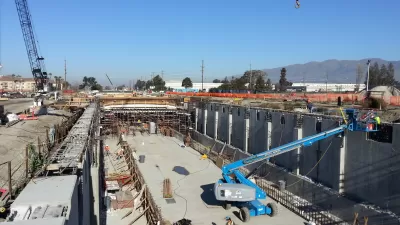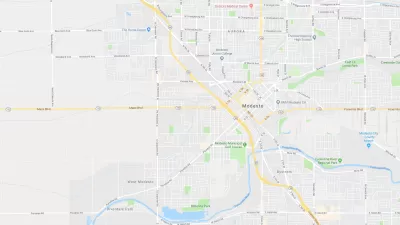According to a scathing critique of the most recent round of TIGER funding, many of the awarded projects fall far below the quality that transit advocates expect.
Jacob Anbinder pens a critique of the TIGER grant program, which announced its most recent round of grant funding at the end of October.
Anbinder clearly supports the spirit of the program, and notes some of its most obvious benefits: "The result is greater transparency for taxpayers, and, because TIGER is not dependent on the Highway Trust Fund, it is immune from the constant threat of insolvency that plagues much of federal transportation funding (though not from Republican attempts to kill the program altogether). Since 2009, it has issued 381 grants averaging about $12 million."
The rub, according to Anbinder: "With this year’s grants, however, it is now clearer than ever that when it comes to investment in mass transit, TIGER is not the savior that many would like to think." In fact, adds Anbinder, "at a time when the country’s mobility needs are severe… the mediocrity of this year’s TIGER transit grantees highlights how sorely a new approach is needed."
The article proceeds to critique the quality of some of this year's winning grants, including, for example, $10 million to a ferry terminal in New Orleans that serves far fewer people that the city's bus system, $9 million for a "travel plaza (Anibinder says it should be considered a "fancy gas station") in Rhode Island, and $18 million to reopen a portion of Main Street in downtown Buffalo to car traffic. Placing cars on a section of street currently served by pedestrians and light rail will, according to the U.S. Department of Transportation, "revitalize the downtown area."
Anbinder notes that many of the projects are seemingly much more in line with the promise of TIGER funding, though even some of the more worthy projects have fatal flaws. As an example of that flaw, Anbinder describes the $20 million grant for a new bus rapid transit line in Birmingham, Alabama. The concern there is a lack of any guarantee that the Birmingham-Jefferson County Transit Authority will actually create a BRT system that works:
"For starters, the Birmingham-Jefferson County Transit Authority currently has only 14 vehicles in reserve for use at peak service, according to information from the National Transit Database—and not all of these are necessarily buses. While the grant announcement says the TIGER money will partly pay for additional buses, a spokesperson for the BJCTA told me that the City of Birmingham (which is the official grant recipient) has yet to decide how much money it will share with the agency for these purposes."
The shortcomings of these awarded projects, according to the argument of the article, "point to a larger problem with the way the federal government funds public transportation." Anbinder suggests, in a lot more detail, that more federal transit funding should go to operations, rather than just capital investments, and that investments should focus more on frequency.
FULL STORY: Our Failed Federal Transit Policy

Alabama: Trump Terminates Settlements for Black Communities Harmed By Raw Sewage
Trump deemed the landmark civil rights agreement “illegal DEI and environmental justice policy.”

Study: Maui’s Plan to Convert Vacation Rentals to Long-Term Housing Could Cause Nearly $1 Billion Economic Loss
The plan would reduce visitor accommodation by 25% resulting in 1,900 jobs lost.

Planetizen Federal Action Tracker
A weekly monitor of how Trump’s orders and actions are impacting planners and planning in America.

Federal Homelessness Agency Places Entire Staff on Leave
The U.S. Interagency Council on Homelessness is the only federal agency dedicated to preventing and ending homelessness.

Restoring Northern India’s Himalayan ‘Water Temples’
Thousands of centuries-old buildings protect the region’s natural springs and serve as community wells and gathering places.

Milwaukee to Double Bike Share Stations
Bublr Bikes, one of the nation’s most successful, will add 500 new e-bikes to its system.
Urban Design for Planners 1: Software Tools
This six-course series explores essential urban design concepts using open source software and equips planners with the tools they need to participate fully in the urban design process.
Planning for Universal Design
Learn the tools for implementing Universal Design in planning regulations.
Caltrans
Smith Gee Studio
Institute for Housing and Urban Development Studies (IHS)
City of Grandview
Harvard GSD Executive Education
Toledo-Lucas County Plan Commissions
Salt Lake City
NYU Wagner Graduate School of Public Service





























